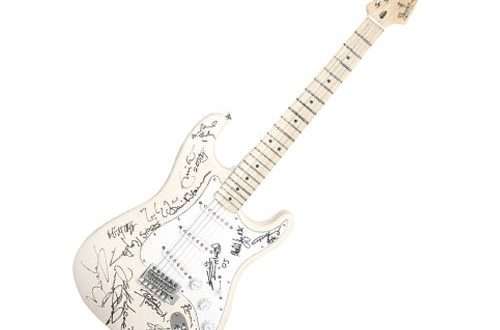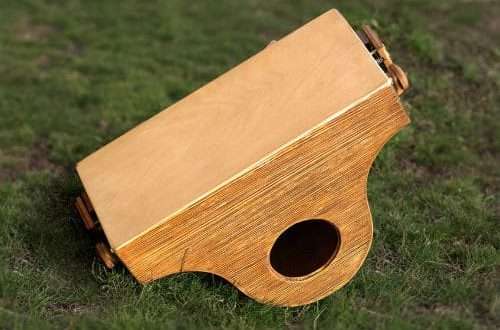How to choose a piano for a child
Contents
Today we’ll talk about how to choose a piano if you don’t have any special knowledge in this area, we’ll find out what exactly you need to look at and what can be ignored. We will talk here exclusively about choosing an acoustic piano (not a digital one).
Of course, the most rational option is to consult with a specialist tuner who understands the mechanics of a piano and can easily mentally disassemble the instrument that you have your eye on. Moreover, tuners can often tell you where you can buy the best piano for a modest price.
But, as a rule, tuners are such sought-after specialists that it is almost impossible to find them free (usually, even in a big city, good tuners can be counted on one hand, but in a small town or village there may not be any of them at all). Also, for help in choosing an instrument, you can contact a pianist teacher from a music school, who, having assessed the piano according to some of his criteria, will be able to tell whether this instrument is suitable for you or not.
If there is no one to ask about this problem, you will have to choose the piano yourself. And it’s okay if you are not an expert in this matter, and have never even studied at a music school. There are criteria by which you, without a musical education or tuning skills, can most likely determine the suitability of an instrument for further use. We are, of course, talking about used instruments; there will be a few words about new ones later.
First of all, let’s dispel some preconceptions. In advertisements for the sale of a piano, the following characteristics are most often written: good sound, in tune, brown, brand name, antique, with candelabra, etc. All such characteristics, with the exception, perhaps, of the brand, are complete nonsense, so they simply do not need to be taken into account, if only for the fact that the best piano is out of tune during transportation and “good sound” is far from a constant phenomenon and a multi-valued concept . We will evaluate the piano on the spot and here is what you need to pay attention to.
Appearance
Appearance is the initial indicator: if the instrument looks unattractive and sloppy, then the child will not like it (and children should love their things). In addition, by its appearance, you can determine the environment and conditions in which the piano was located. For example, if the veneer comes off, this means that the instrument was first subjected to waterlogging and then drying out. According to this criterion, there’s not even anything more to say: if we like it, we’ll look further, if not, we’ll move on to inspecting the next one.
Listening to the sound
The timbre of the piano should be pleasant, not annoying. What to do? Here’s what: we listen to each note, pressing all the white and black keys in a row, one after another on the keyboard from left to right, and evaluate the sound quality. If there are defects such as knocking instead of sound, sounds vary greatly in volume, or the sound from some keys is very short (I do not mean the upper case on the right side of the keyboard), then there is no point in continuing the inspection. If two keys produce a sound of the same pitch, or if one key produces a combination of two different sounds, then you should be wary and continue the inspection (here you need to understand the reasons).
If, in general, the sound is too ringing, rattling and loud, it is not very pleasant for the ear (bad sound discourages children from studying and has the same irritating effect on the psyche, like, for example, the buzzing of a mosquito). If the timbre of the instrument is soft and dull, this is good; ideal is when the dullness of the sound is combined with its moderate volume (not too quiet and not too loud).
Testing the keyboard
Let’s go through all the keys in a row again, now in order to check whether they sink to the same depth, whether individual keys sink (that is, get stuck), and whether the keys knock on the bottom of the keyboard. If the key is not pressed at all, this problem can be easily fixed mechanically, but you should be wary. Evaluate the lightness of the keyboard – it should not be too tight (such keyboards are dangerous for beginning pianists) and too light (which indicates wear of the structural parts).
Look at the keyboard from above and from the side – the surface of all the keys should be located on the same plane; if some keys protrude above this plane or, conversely, are slightly lower relative to this level, then this is bad, but quite fixable.
Inspecting the piano inside
You need to remove the top and bottom shields and the keyboard cover. The inside of the piano looks something like this:
The keys that we see on the outside are actually just levers for imparting movement to the hammers, which in turn transmit the blow to the string – the source of sound. The most important components of the internal structure of a piano are a module with mechanics (hammers and everything with them), strings and a metal frame (“harp in a coffin”), pegs on which the strings are screwed and a wooden soundboard.
Deca-resonator and mechanics
First of all, we examine the resonator deck – a special board made of coniferous wood. If it has cracks (there are cracks at the bottom) – the piano is no good (it will rattle). Next we move on to mechanics. Professional tuners understand the mechanics, but you can check whether the felt and cloth coverings are moth-eaten and whether the hammers are loose (manually shake each hammer). The piano has only 88 hammers, as well as keys (sometimes 85) and if more than 10-12 of them are wobbly, then it is likely that all the fastenings in the mechanics have become loose and some parts may fall out (everything can be tightened, but where is the guarantee? , that in a week the new ones won’t wobble?).
Next, you should go through all the keys in a row again, making sure that each hammer moves in isolation and does not touch the neighboring one. If it touches, then this is also a sign of weakened mechanics and evidence that the piano has not been tuned for a long time. The hammer must bounce off the string immediately after hitting it, and the sound must disappear immediately as soon as you release the key (at this moment its muffler, the so-called damper, is lowered onto the string). This is, perhaps, all that you can check on your own in mechanics, without having any idea about its operation and structure, which I will not describe in this article.
Strings
We immediately check the set of strings, and if any of the strings are missing, then you should ask the owner where it went. How do you know if there are not enough strings? It’s very simple – due to too large a gap between the strings and a vacant peg. In addition, if the string on the peg is secured in an unusual way (for example, not a twist, but a loop), then this indicates string breaks in the past (sometimes breaks can be detected by the number of strings in the “choir” (that is, a group of 3 strings) – when there are not three of them, but only two, stretched obliquely).
If the piano is missing at least two strings or there are obvious traces of previous breaks, then such a piano should not be purchased under any circumstances, since most of the remaining thin strings may crumble over the next year.
How many
Next, we inspect the pegs on which the strings are attached. It is clear that by turning the pegs (this is done using a tuning key), we adjust the pitch of each string. Pegs are needed to fix the string in such a way that when it vibrates it produces a very specific sound. And if the pegs do not fix the tension of the strings well, then the piano as a whole does not stay in tune (that is, tuning it is almost useless).
Of course, you are unlikely to see pegs that are directly wobbly or falling out (and sometimes it even comes to this). This is natural, because the pegs are attached to a wooden beam, and the wood can dry out and become deformed. The sockets into which the pegs are inserted can simply expand over time (let’s say an old instrument has been tuned a hundred times during its “life”). If you, inspecting the pegs, see that one or two of the total bank have unusual sizes (larger than all the others), if some of the pegs are skewed, or if you notice that something else is inserted into the socket besides the peg itself (pieces of veneer , some kind of wrapper for a peg), then run away from such a piano – it is already dead.
Well, that’s probably all – more than enough to buy a passable instrument. To this you can also check the operation of the right and left pedals; however, their functionality is quite easy to restore if something is wrong.
Conclusion
Let’s summarize the post “How to choose a piano.” So here’s what you need to pay attention to:
– satisfactory and aesthetic appearance;
– pleasant sound timbre and absence of sound defects;
– flatness and operability of the keyboard;
– no cracks in the resonator deck;
– state of mechanics (equipment and performance);
– string set and tuning efficiency.
Now, you can turn the information from this article into settings that will guide you in practice. Check the site often to find out more interesting things. If you want new articles sent directly to your inbox, subscribe to updates (fill out the form at the top of the page). Below, under the article, you will find social networking buttons; by clicking on them, you can send an announcement of this article to your pages – share this article with your friends!
https://www.youtube.com/watch?v=vQmlVtDQ6Ro



